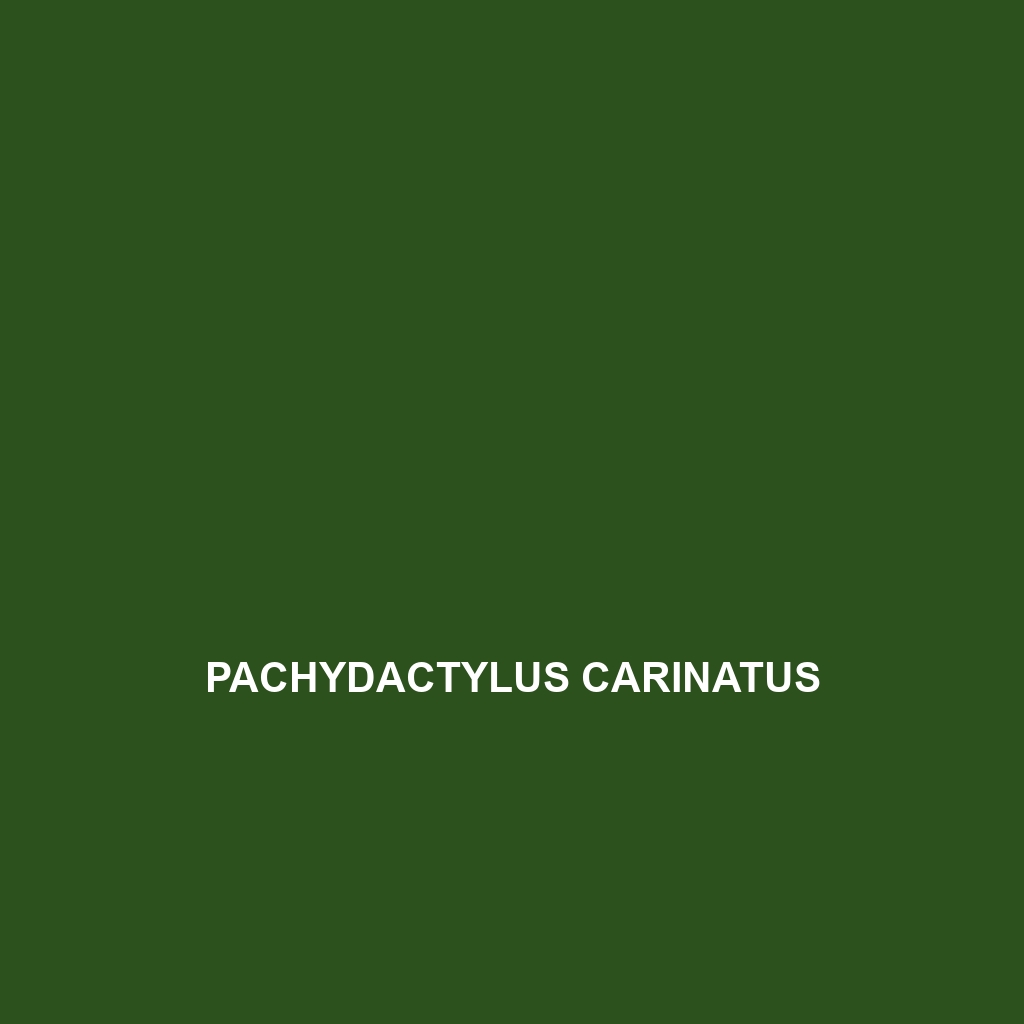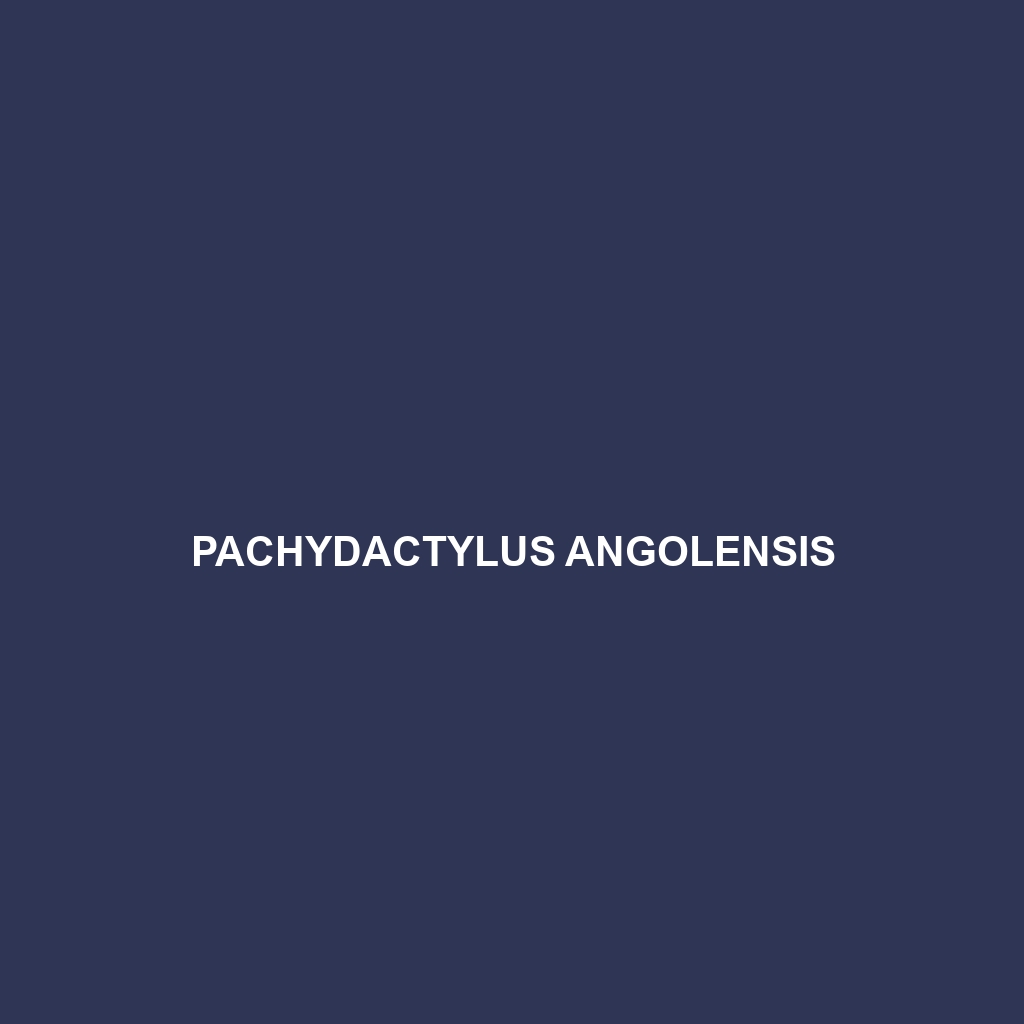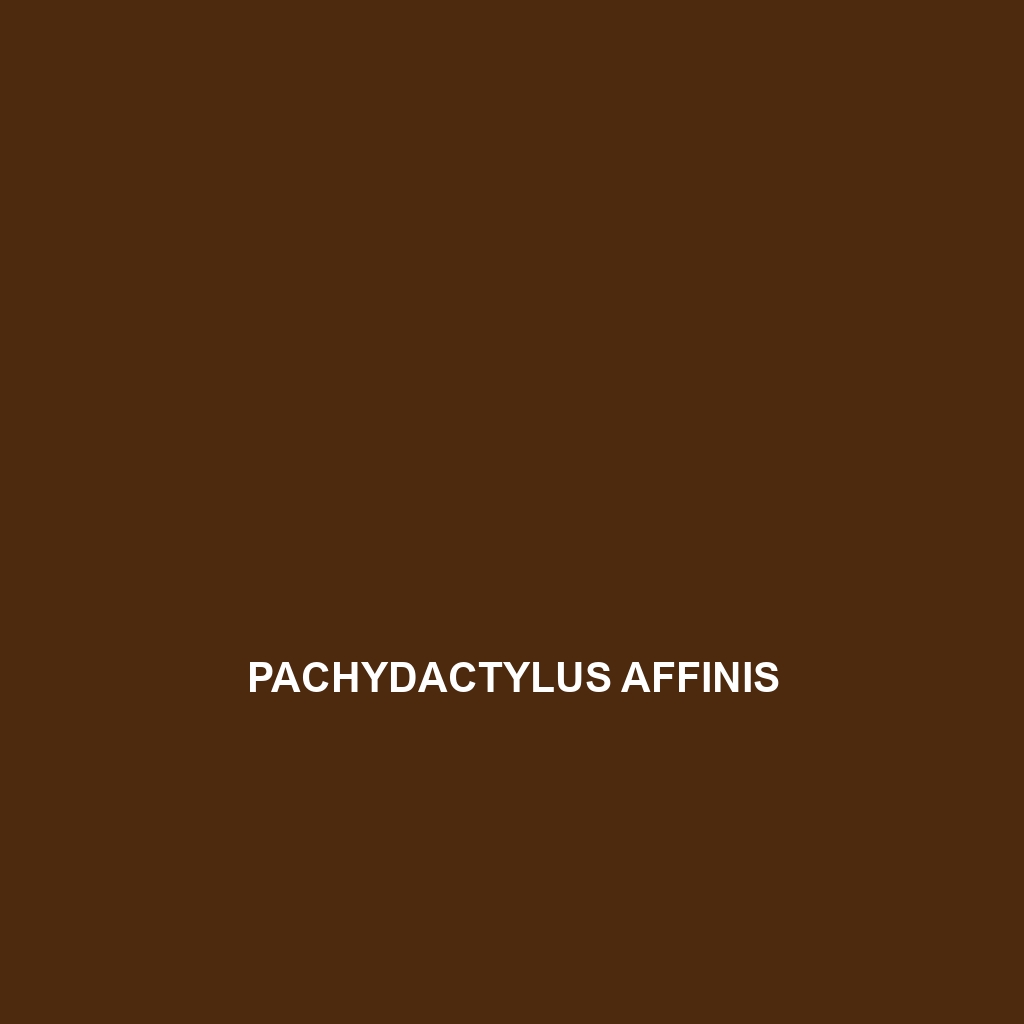<p>Discover the fascinating <b>Pachydactylus carinatus</b>, also known as the <i>puff adder gecko</i>. This nocturnal, insectivorous species thrives in the arid regions of southern Africa, boasting a variety of colors and specialized climbing abilities, while playing a critical role in regulating local insect populations.</p>
Tag: gecko reproduction
Pachydactylus capensis
Discover the Pachydactylus capensis, commonly known as the Cape thick-toed gecko, a nocturnal insectivore native to southern Africa's savannas and semi-arid deserts. With its distinctive granular skin, large adhesive toes, and remarkable climbing abilities, this gecko plays a vital role in its ecosystem by regulating insect populations and serving as prey for larger predators.
Pachydactylus caraculicus
<b>Pachydactylus caraculicus</b> is a medium-sized nocturnal gecko native to the arid regions of southern Africa, featuring a striking sandy beige to brown coloration with dark spots for effective camouflage. Primarily insectivorous, this adaptable species thrives in rocky terrains and plays a crucial role in its ecosystem by controlling insect populations.
Pachydactylus barnardi
Discover the captivating Pachydactylus barnardi, a robust nocturnal gecko native to southern Africa, known for its distinctive earthy coloration, nocturnal hunting behaviors, and essential role in controlling insect populations. This resilient species thrives in warm, arid habitats, displaying unique adaptations such as tail regeneration and effective camouflage amidst rocky outcrops and sandy soils.
Pachydactylus angolensis
<p><b>Pachydactylus angolensis</b>, commonly known as the Angola thick-toed gecko, is a resilient insectivore native to southern Angola, thriving in savannas and grasslands. Characterized by its thick, flattened toes for climbing, this nocturnal species features sandy beige to earthy brown coloration that aids in camouflage, contributing to its vital role in maintaining insect population control within its ecosystem.</p>
Pachydactylus affinis
<p><b>Pachydactylus affinis</b>, a resilient gecko native to Namibia and South Africa, thrives in arid environments and exhibits distinctive mottled skin for camouflage. This nocturnal insectivore features large, bulbous toes for climbing and plays a crucial role in controlling insect populations within its ecosystem.</p>
Oedura tryoni
<p><b>Oedura tryoni</b>, also known as the Southern Spotted Velvet Gecko, thrives in the rainforests and temperate forests of Australia. This nocturnal, insectivorous species is recognized for its distinct velvety skin, large bulging eyes, and ability to regenerate its tail, playing a crucial role in its ecosystem's biodiversity.</p>
Oedura picta
The <b>Oedura picta</b>, or Eastern Stone Gecko, is a medium-sized, nocturnal gecko native to the dry scrublands and rocky outcrops of eastern Australia, featuring a robust body and distinct color patterns for camouflage. Primarily insectivorous, these geckos exhibit fascinating social behaviors and play a crucial role in their ecosystem by controlling insect populations.
Oedura monilis
<p>Discover the <b>Oedura monilis</b>, or jeweled gecko, a striking nocturnal species native to eastern Australia's arid regions and temperate forests. With its remarkable tail regeneration and insectivorous diet, this gecko plays a vital role in controlling insect populations while showcasing stunning patterns for effective camouflage.</p>
Oedura luritja
Discover the unique Oedura luritja, also known as the Luritja Gecko, a nocturnal insectivore from Australia's arid regions, featuring a flattened body, large movable eyelids, and an impressive ability to camouflage with its surroundings. This species plays a crucial role in maintaining ecological balance as both a predator and prey while exhibiting fascinating behaviors and adaptation to its harsh habitat.








